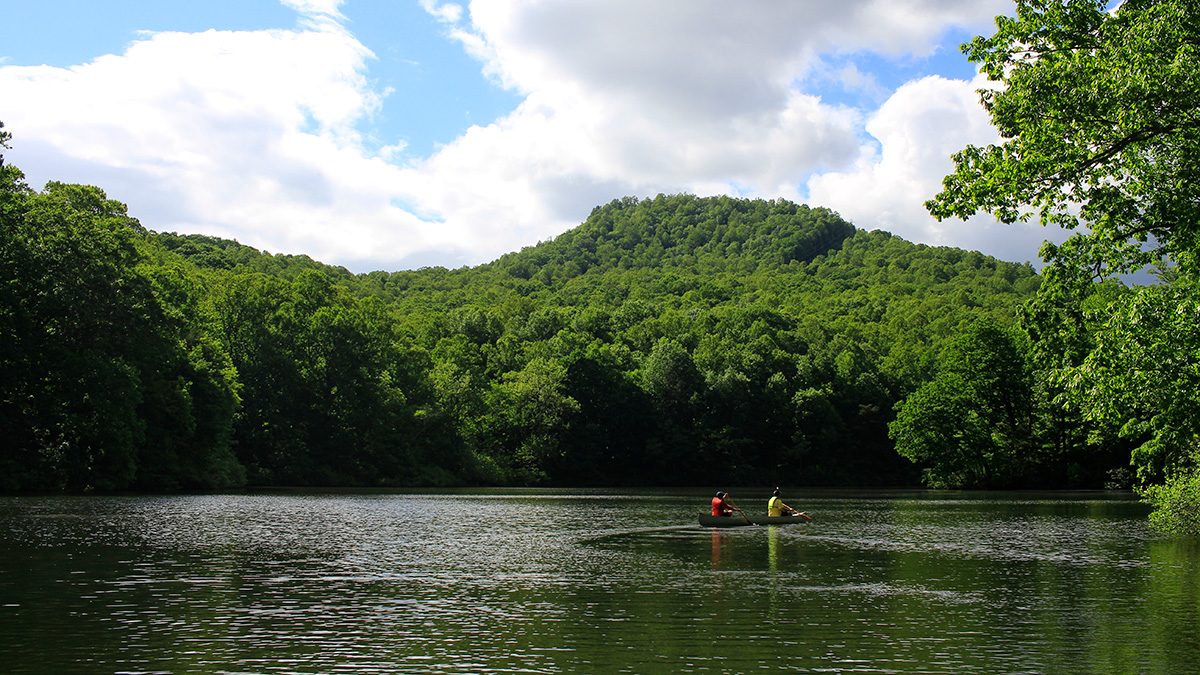Oxygen plays an important role in freshwater ecosystems, from contributing to drinking water quality to supporting biodiversity. It also helps keep nutrients and carbon cached in bottom sediment. “Oxygen provides this really critical ecosystem service of allowing lakes functionally to serve as sinks of carbon, nitrogen, and phosphorus that drain in from the land,” said Cayelan Carey, an associate professor of biological sciences at Virginia Tech.
But the world’s fresh waters are suffocating. The increase in anoxia—the lack of available oxygen—is a well-documented global phenomenon now known to be mostly driven by land use and climate change. But studies of the phenomenon have been hindered by shifts in water temperature and small volumes that don’t accurately reflect ecosystem-scale changes.
Analyzing the different scenarios allowed researchers to “calculate the process rates as well as the consequences of anoxia on a longer timescale.”
In a new study published in Global Change Biology, Carey and colleagues designed a study (REDOX, the Reservoir Ecosystem Dynamic Oxygenation experiment) that allowed for the manipulation of oxygen levels in water without changing its temperature. The REDOX system pumped water samples out of Falling Creek Reservoir in Vinton, Va., a reservoir built in a traditionally agricultural area at the turn of the 20th century. The researchers injected very high concentrations of nearly pure oxygen into the water, then returned it to the reservoir.
After retrieving water samples from the bottom of the reservoir, researchers measured the sample’s dissolved nitrogen, phosphorus, and organic carbon. These nutrients served as water quality variables, which allowed the authors to adapt an open source ecosystem model to represent the specific reservoir with all its layers, inflows, and the exact weather that occurred during the research time frame (2013–2021). They used their field data to model what would happen with different oxygen levels, including an injection of full oxygen for the entire 7 years as well as an injection of no oxygen at all.
Analyzing the different scenarios allowed researchers to “calculate the process rates as well as the consequences of anoxia on a longer timescale,” Carey said.
Modeling the manipulation of entire ecosystems is difficult to do, said Kevin Rose, a professor at Rensselaer Polytechnic Institute who wasn’t involved in the study. That is why “the REDOX experiments they did are really cool,” he said. “The model does a great job overall of reconstructing the long-term trends [of anoxia].”
From Sink to Source
Although the releases of carbon, nitrogen, and phosphorus in response to anoxic conditions weren’t surprising, Carey said their magnitude was—particularly that of nitrogen, which was released at 6 times its previous rate during specific periods. “Nitrogen was so responsive to anoxia…[It] was a big surprise,” she said.
“Lakes and reservoirs, as they become anoxic, not only have poor water quality themselves but can promote poor water quality downstream as well.”
The researchers also found that anoxia in one water source can have a domino effect downstream. As nutrients from an anoxic body of water reach a new body of water, that lake or reservoir will use oxygen to break them down. This process leaves less oxygen in the lake.
“Functionally, what we’re seeing is that lakes and reservoirs, as they become anoxic, not only have poor water quality themselves but can promote poor water quality downstream as well,” said Carey.
Land Use Changes
The most important step in stopping waters from becoming anoxic is to limit the amount of carbon, nitrogen, and phosphorus that enters bodies of water in the first place through local land use changes, said Carey. “As lakes are increasingly unable to do their jobs serving as these sinks because anoxia is increasing, we need to decrease the amount of work they have to do,” she said.
Research at the reservoir is continuing. Carey and colleagues are interested in better understanding how climate changes, like increasing air temperatures, might affect anoxia, water quality, and other long-term patterns in freshwater ecosystems. “I think this is playing out as kind of a pretty interesting whole-ecosystem climate experiment,” she said.
—Danielle Beurteaux (@daniellebeurt), Science Writer

